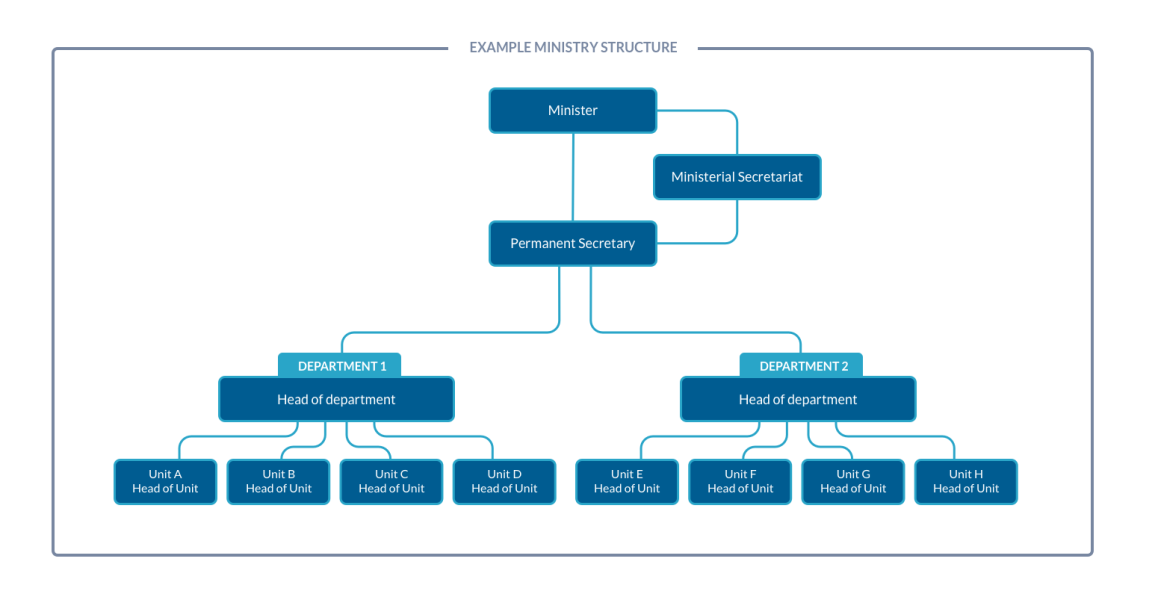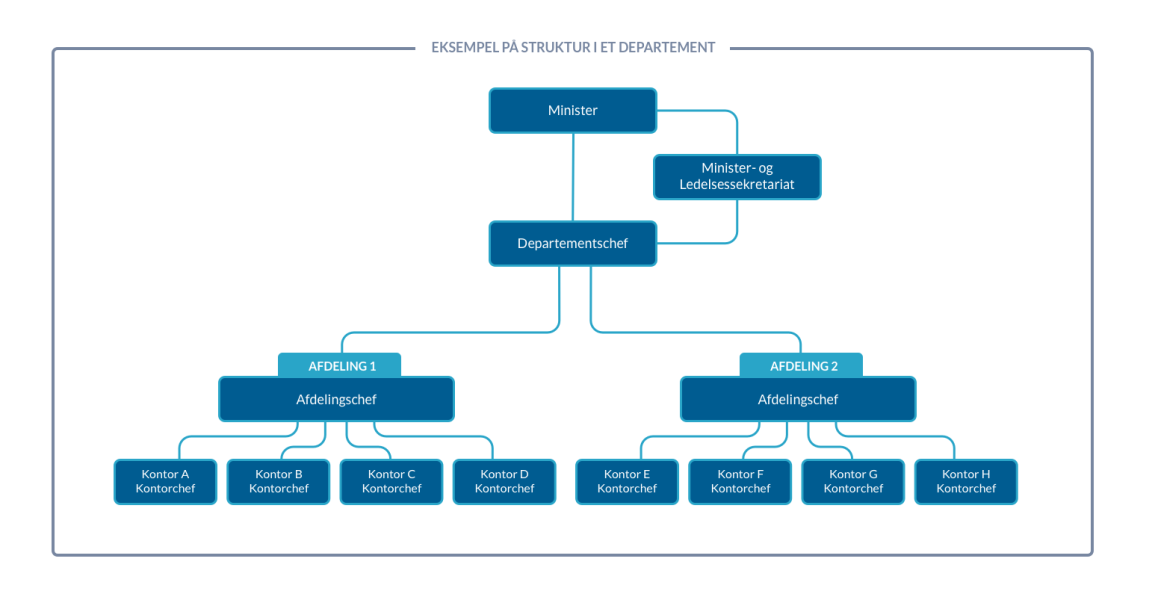Ministerial terminology
Terminology within the sectors of public administration has a tradition of being culture specific. Therefore, we use some generic terms to describe the groupings and positions within a ministry. However, you should be aware that these names may be called otherwise in your culture and/or organization.
Below, you can find an overview over the most commonly used terms in this guide and a description of how we use them.

|
Minister |
used in a generic context to refer to the politically elected head of a ministry. |
|
Ministerial department |
used when it is important to distinguish between the ministry as a complete governmental organ (which includes agencies, authorities, and other offices) and the ministry as an independently running department. |
|
Permanent secretary |
refers to the senior-most public servant within the ministry who serves as the head of the ministerial department and reports to the minister. |
|
Ministerial secretariat |
refers to the department in the ministry that handles administrative tasks such as ministerial services. |
|
Department |
refers to a division within the ministerial department that manages a specific area within the area of the ministry. The top-level manager of a department in a ministry is referred to as the head of department. There are normally more than one department in a ministry and, consequently there are also more than one head of department. |
|
Unit |
refers to the smallest division within the ministerial structure and is often placed under a department. The top-level manager of the unit is referred to as the Head of unit. |
Regional terminology
In this section, you can find adjusted versions of our generic ministerial organization. These adjustments are made to reflect a sample of a ministerial organizational structure in a specific country. Even though these may be more precise and relatable to public servants of that specific region, the naming conventions may still vary within that region’s ministries.
